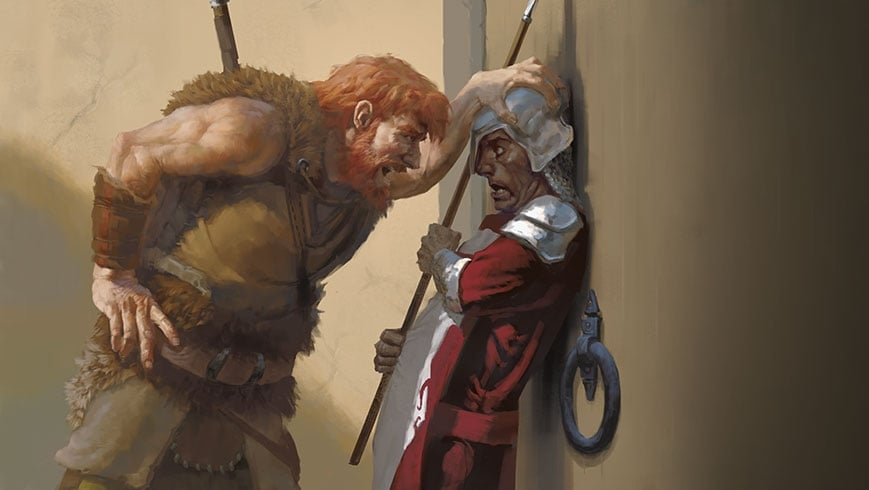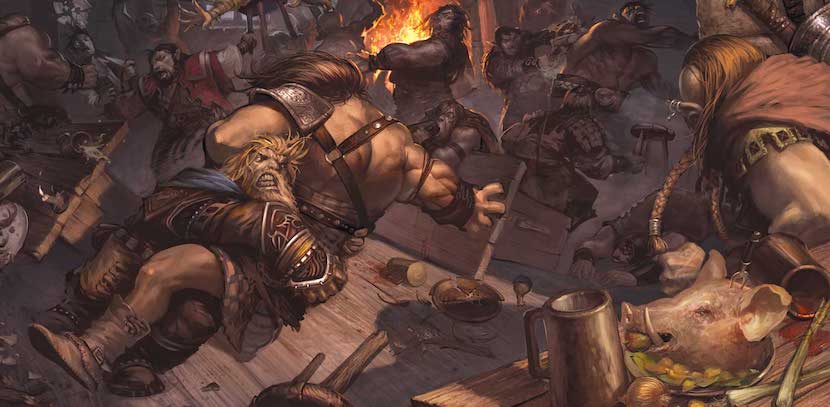D&D: Bonus Actions For Bonus Tractions

Shield Mastery is a feat you might not have considered too much before this week–but now everyone’s talking about it. Let’s talk about why.
And yes, by everyone I mean literally everyone. Your boss, your mother, even your greengrocer is talking about it–which is weird because you don’t even have a greengrocer because you live in a city and this is 2018. Unless you live in like Portland or Austin, in which case, yup, even they are talking about what’s going on with the Shield Master feat right now.
And it all comes down to Bonus Actions. Earlier this month Lead Rules designer Jeremy Crawford (whom you’ll have seen talking about the Giff and the Oblex recently) took to Twitter to re-issue a clarifying tweet about how the feat works. First here’s the feat:
You use shields not just for protection but also for offense. You gain the following benefits while you are wearing a shield:
- If you take the Attack action on your turn, you can use a bonus action to try and shove a creature within 5 feet of you with your shield.
- If you aren’t incapacitated, you can add your shield’s AC bonus to any Dexterity saving throw you make against a spell or other harmful effect that targets only you.
- If you are subjected to an effect that allows you to make a Dexterity saving throw to take only half damage, you can use your reaction to take no damage if you succeed on the saving throw, interposing your shield between yourself and the source of the effect.
Now, this is a pretty decent feat altogether–but the whole crux of the matter comes in with that first sentence. “If you take the Attack action on your turn, you can use a bonus action…” is the focus of Crawford’s ruling, which boils down to in cases like this, the bonus action comes after the action is complete.
As gathered on Sage Advice
But people seem to really want that shove to come in where they want it to. Possibly because they think it’s a way for a sword & board fighter to gain an advantage, but possibly because it might call into question the timing of other bonus actions, and so on:
But that ruling is a year old–back in 2017 as part of the Sage Advice Compendium/errata, the same timing clarification of “if you need to X so you can Y then you have to do X first” appeared alongside the timing for War Magic for the Eldritch Knight. So why there’s so much discussion about it now is beyond me. If you go and read the thread on Sage Advice you’ll find a plethora of examples of people saying “but can I do ‘X thing that is explicitly permitted in the rules already’ and if so, why not knock someone down with a shield?”
Which brings us to the point. D&D doesn’t simulate the world–it’s a set of tools for interacting with a world that you create–the rules are there not to replicate everything in real life, and if you expect them to, you start having to do so many granular things. And sure there are a few quirks from the timing, but nothing that breaks the immersion of it all.
Not so though, according to the internet. People on Reddit, Twitter, and the Official Facebook page are going on about how this will result in shield builds swapping for two weapon fighting builds, which is bringing up the whole “two weapon fighting action economy” discussion again.
“Discussion”
So whether you think Shield Master has been nerfed or everything’s fine–or if it’s somehow possible that you hadn’t heard of all of this incredibly relevant and necessary discussion, I thought I’d share this so that we can all get into the real fun of D&D: arguing about rules.
Happy Adventuring!









